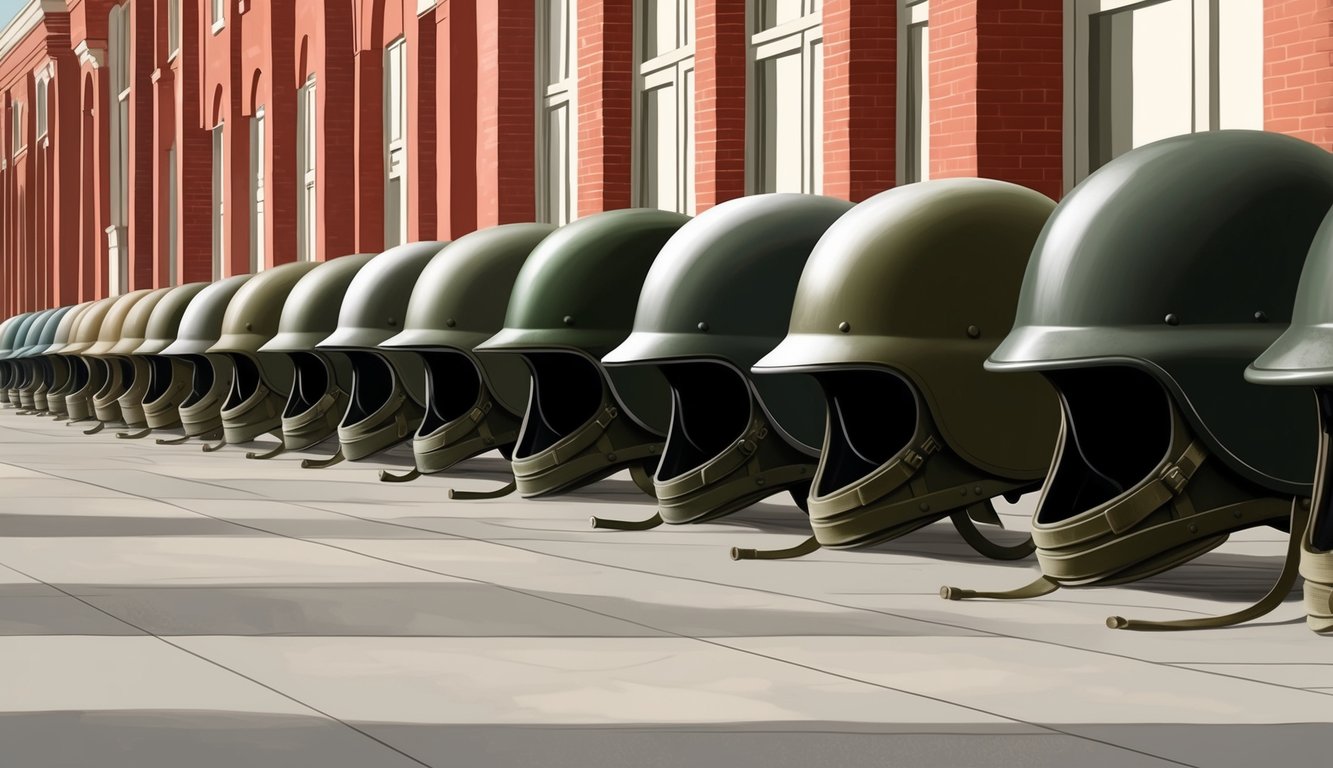After finishing basic training, Army recruits proceed to Advanced Individual Training (AIT) to specialize in their designated Military Occupational Specialty (MOS).
The length of AIT can vary greatly depending on the selected career within the Army.
AIT durations may range from several weeks to over a year, with most programs spanning between 4 to 20 weeks.
AIT incorporates classroom learning alongside hands-on field exercises to effectively prepare you for your Army role.
For instance, a combat engineer will undergo 14 weeks of training focused on construction and demolition techniques, whereas artillery specialists may complete their training in as little as 7 weeks.
Some roles, like infantry and armor, combine basic training and AIT into a unified program known as One Station Unit Training (OSUT).
Your AIT journey will take you to various Army installations throughout the country, each specializing in different areas.
For example, Fort Benning in Georgia provides training for infantry and armor soldiers, while Fort Lee in Virginia specializes in logistics and transportation roles.
This targeted training guarantees you are thoroughly equipped to face the unique challenges of your chosen MOS.
Key Takeaways
- The duration of AIT differs by MOS, ranging from a few weeks to over a year.
- Training combines classroom education with practical field training.
- AIT locations are specialized based on the skills necessary for each MOS.
Understanding AIT in the Army
Advanced Individual Training (AIT) is a pivotal stage in a soldier’s career, providing the specialized skills required for their specific Army role.
AIT builds upon the groundwork laid in Basic Combat Training, with an emphasis on job-specific competencies.
Basics of Advanced Individual Training
During AIT, you’ll acquire the technical knowledge pertinent to your selected MOS.
The length of AIT varies based on your chosen job, with programs lasting anywhere from a few weeks to several months.
Throughout this period, you’ll engage extensively in practical training and classroom learning.
Your day-to-day activities will include physical training, hands-on exercises, and academic coursework.
You’ll familiarize yourself with equipment and tools relevant to your MOS, developing proficiency in tasks that you’ll execute in your future Army position.
AIT also reinforces the discipline and work ethic instilled during Basic Training, allowing you to further cultivate leadership and teamwork skills crucial for your military career.
Comparison with Basic Combat Training
While Basic Training focuses on converting civilians into soldiers, AIT emphasizes specialized job skills.
In Basic Training, you gained general military knowledge and improved physical fitness.
AIT enhances this foundation with tailored training.
The environment in AIT is generally less intense than during Basic Training, granting you more personal time and liberties while maintaining strict discipline.
Instructors at AIT are usually experts in their fields, offering in-depth insights and real-world experiences.
An important distinction is found in the One Station Unit Training (OSUT) offered for specific combat roles, which merges Basic Training and AIT into a single, continuous program at one site.
Phases of AIT: Phase IV and Phase V
AIT is segmented into phases, with Phase IV and Phase V being particularly significant.
Phase IV signifies the transition from Basic Training to AIT.
During this phase, you’ll acclimate to your new setting and begin to explore job-specific skills.
Phase IV grants you more privileges compared to Basic Training, including the possibility of using personal electronics during free time and getting occasional base passes.
Phase V marks the final stage of AIT.
In this phase, you’ll refine your skills and ready yourself for your initial duty assignment.
You’ll experience heightened responsibilities and freedoms, reflecting your development as a soldier.
In Phase V, you may engage in field exercises that simulate realistic scenarios, testing your ability to apply the skills you’ve recently acquired.
Length and Structure of AIT Programs
Army Advanced Individual Training (AIT) programs differ considerably in duration and content, with the length of AIT reflecting the chosen Military Occupational Specialty (MOS).
Some training programs are brief while others extend up to a year.
Infantry AIT Duration
Infantry AIT is one of the shorter programs, typically spanning around 14 weeks at Fort Benning, Georgia.
The training focuses on combat skills, weapon proficiency, and tactical maneuvers.
During infantry AIT, you will learn:
- Advanced marksmanship
- Squad tactics
- Land navigation
- Physical fitness
The program is intense and physically demanding, offering training in various environments that simulate real combat situations.
By the end, you will be equipped to face the challenges of an infantry role.
Military Police and Engineering Tracks
Military Police (MP) AIT lasts approximately 20 weeks, while Engineering AIT can vary from 8 to 12 weeks.
MP training occurs at Fort Leonard Wood, Missouri.
As an MP trainee, you will learn:
- Law enforcement procedures
- Combat support operations
- Detainee operations
Engineering AIT encompasses several specialties, including training in:
- Construction
- Carpentry
- Plumbing
- Electrical systems
These programs blend classroom teaching with hands-on experience, equipping you with vital skills essential for maintaining infrastructure and security.
Intelligence and Analysis Training Lengths
Intelligence AIT programs are among the longest, often lasting between 16 and 52 weeks.
Duration varies based on your specific intelligence role and security clearance needs.
Your training might encompass:
- Language skills
- Cryptology
- Signal intelligence
- Human intelligence gathering
These programs are academically rigorous, requiring significant time in classrooms and computer labs to prepare you for the intricate field of military intelligence and analysis.
Health and Maintenance-Related AIT
Health-related AITs, such as Combat Medic training, typically last around 16 weeks.
Maintenance programs can range from 13 to 23 weeks, contingent on the specialty.
As a Combat Medic trainee, you will learn:
- Emergency medical procedures
- Battlefield trauma care
- Preventive medicine
Maintenance AIT encompasses various technical skills, including:
- Vehicle repair
- Aviation maintenance
- Electronic systems
These programs emphasize practical abilities, with much of your time spent in workshops or medical facilities, where you’ll practice with the equipment relevant to your future role.
Different Branches and Their AIT Lengths
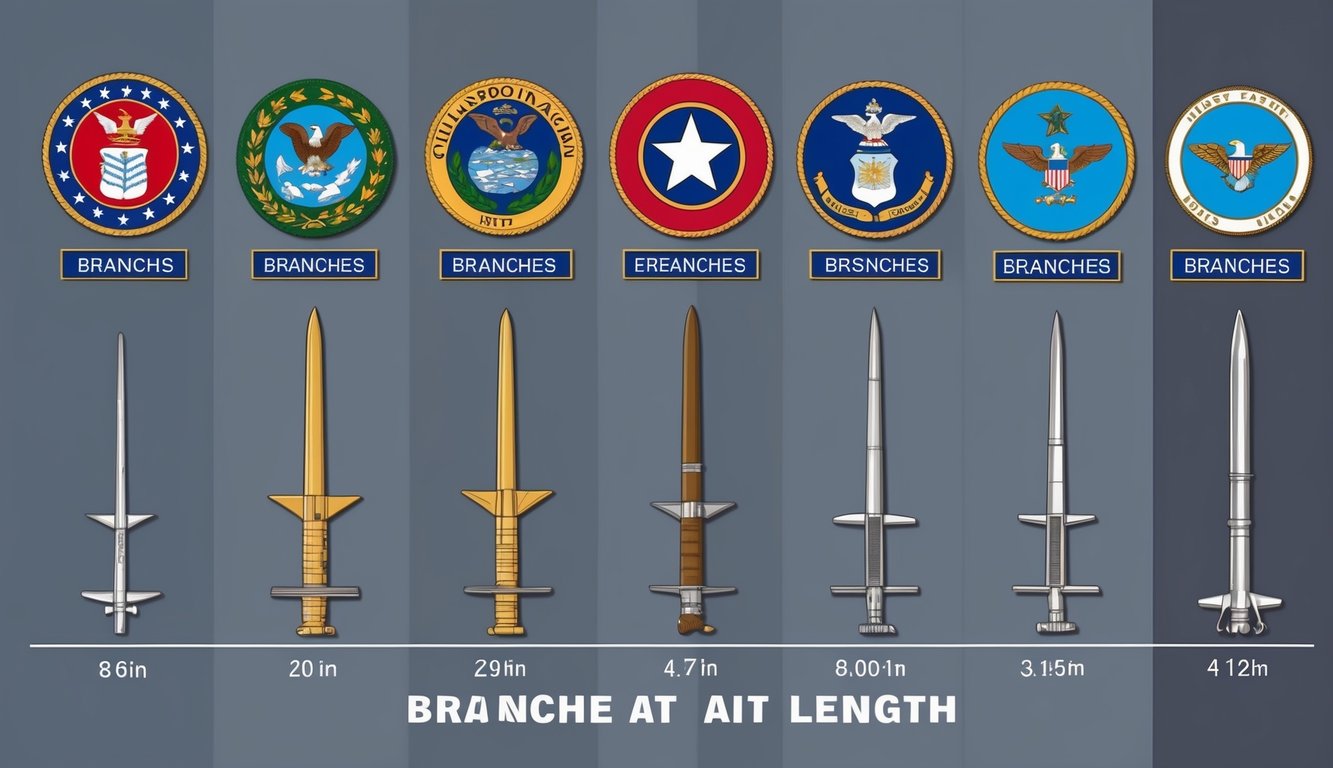
Army Advanced Individual Training (AIT) lengths differ substantially across various branches, with duration based on the complexity of skills required for each Military Occupational Specialty (MOS).
Let’s examine the typical AIT lengths for different Army branches.
Combat Arms AIT
Combat arms MOS training tends to have longer durations due to the intensive skill sets required.
Infantry (11B) AIT lasts roughly 14 weeks at Fort Benning, while artillery (13B) recruits undergo about 7 weeks of training.
Air Defense Artillery (14P) training spans about 20 weeks.
For armor crewmen (19K), you will likely face approximately 15 weeks of training, while combat engineers (12B) participate in a 14-week course mastering construction and demolition capabilities.
These extended AIT periods reflect the intricate nature of combat roles and the necessity for thorough preparation.
Support and Services AIT
Support and service-related roles generally involve shorter AIT durations.
For instance, as a human resources specialist (42A), you’ll engage in around 8 weeks of training.
Finance specialists (36B) typically spend about 12 weeks acquiring their skills.
For food service operations (92G), AIT lasts approximately 8 weeks, while water treatment specialists (92W) undergo about 14 weeks of training.
Communications specialists (25U) complete a 16-week course to acquire essential battlefield communication skills.
Although these roles are vital to operations, they typically require less training time compared to combat arms positions.
Medical and Logistics AIT
The lengths of AIT in medical and logistics fields vary according to specialization.
Combat medics (68W) experience one of the longer AITs, lasting about 16 weeks, while dental specialists (68E) train for around 32 weeks.
In logistics, motor transport operators (88M) complete about 7 weeks of AIT, petroleum supply specialists (92F) take around 8 weeks, and ammunition specialists (89B) require roughly 9 weeks of instruction.
These AIT durations highlight the balance between technical knowledge and practical skills needed in medical and logistics occupations, ensuring comprehensive training tailored to each individual job within the Army.
AIT Locations and Facilities
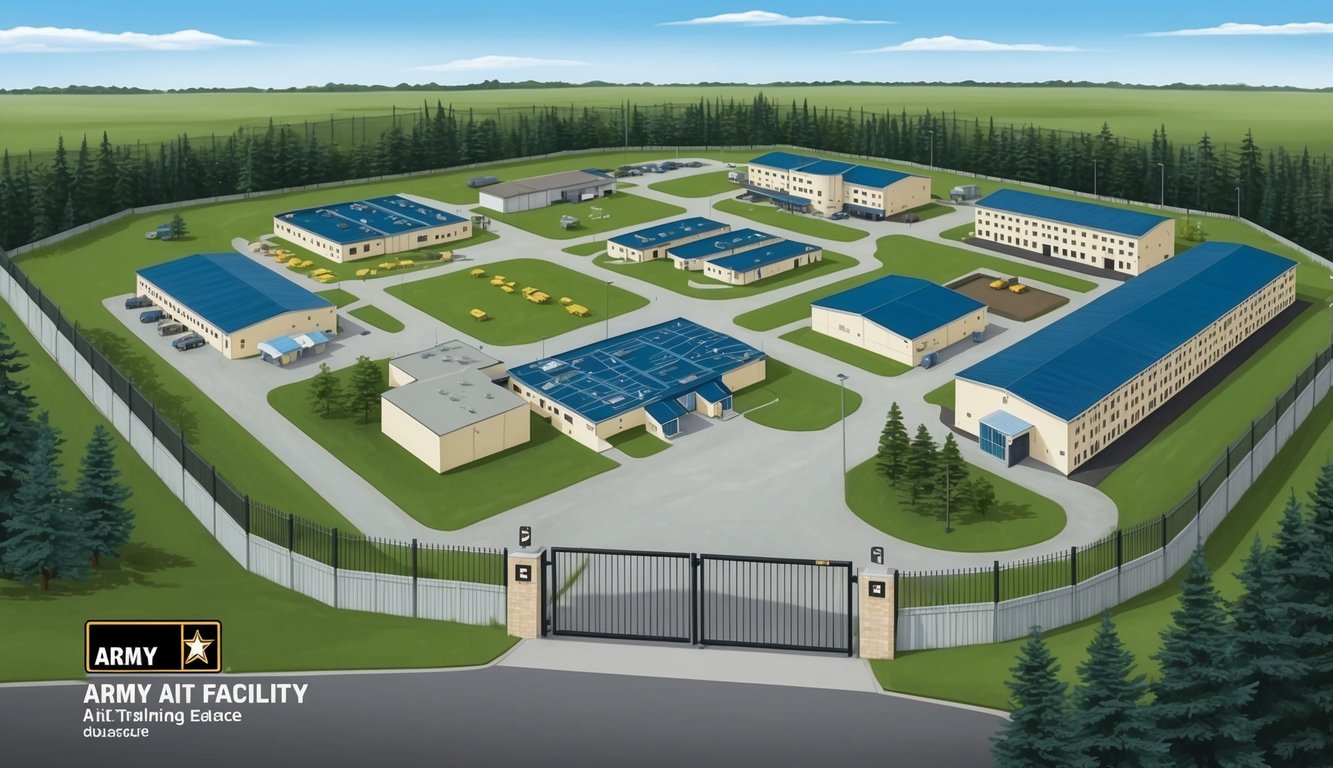
Army Advanced Individual Training is conducted at various specialized facilities throughout the United States.
Each site is focused on specific skill sets and military occupational specialties, equipping you with the expertise necessary for your Army career.
Fort Benning and Infantry Training
Fort Benning in Georgia serves as the home of the Infantry, featuring cutting-edge training grounds that replicate real-world combat conditions.
The base includes urban warfare complexes, wooded areas for tactical drills, and advanced shooting ranges.
At Fort Benning, you will learn infantry tactics, weapon handling, and team maneuvers, taking advantage of high-tech simulators that allow for realistic practice before engaging in live-fire exercises.
The base also hosts the Airborne School, where you can earn your jump wings if your MOS requires parachuting.
Fort Benning’s climate and terrain create an ideal environment for vigorous physical training, crucial for infantry roles.
Aviation and Technology at Fort Eustis and Fort Gordon
Fort Eustis in Virginia specializes in aviation and transportation training, equipped with hangars for a variety of aircraft, including helicopters and fixed-wing planes.
The base also features advanced maintenance facilities where you’ll learn to ensure Army aircraft remain operational.
Fort Gordon in Georgia is recognized as the center for cyber and signal training, featuring state-of-the-art computer labs and communication centers that duplicate real military command environments, preparing you for roles in the Army’s technology and communications sectors.
Both installations offer modern classrooms fitted with the latest technology to enhance your learning experience.
You’ll utilize simulators that replicate the systems you’ll operate in the field, ensuring you are thoroughly prepared for your assignments.
Intelligence Training at Fort Huachuca
Fort Huachuca in Arizona is the primary site for intelligence training, featuring secure facilities crafted for managing sensitive information.
The base includes specialized classrooms aimed at language training and cultural education.
The unique desert environment of the fort serves as an optimal setting for surveillance and reconnaissance training, where you’ll work with progressive sensor technologies and learn to interpret complex datasets.
Fort Huachuca also contains simulated intelligence operation centers where you’ll practice real-time analysis and reporting, designed to replicate the high-pressure environments characteristic of an intelligence-oriented career.
Medics and Logistics at Fort Sam Houston and Fort Lee
If you’re training to be an Army medic, your training will occur at Fort Sam Houston in Texas, equipped with state-of-the-art medical simulation centers.
You’ll practice on advanced mannequins that mimic real medical conditions and traumas.
This facility also includes simulated battlefield scenarios where you’ll learn to deliver care effectively under pressure, and modern lecture halls outfitted with the latest medical technology and teaching tools.
Meanwhile, Fort Lee in Virginia acts as the logistics base, featuring expansive warehouses and simulation centers for supply chain management.
Various vehicles and equipment are available for you to learn maintenance and operational skills.
Additionally, you’ll receive training in fuel and water purification systems, vital for sustaining Army operations.
Fort Lee also offers culinary training facilities for those entering food service roles, ensuring troops receive quality meals in any situation.
AIT for Different MOS
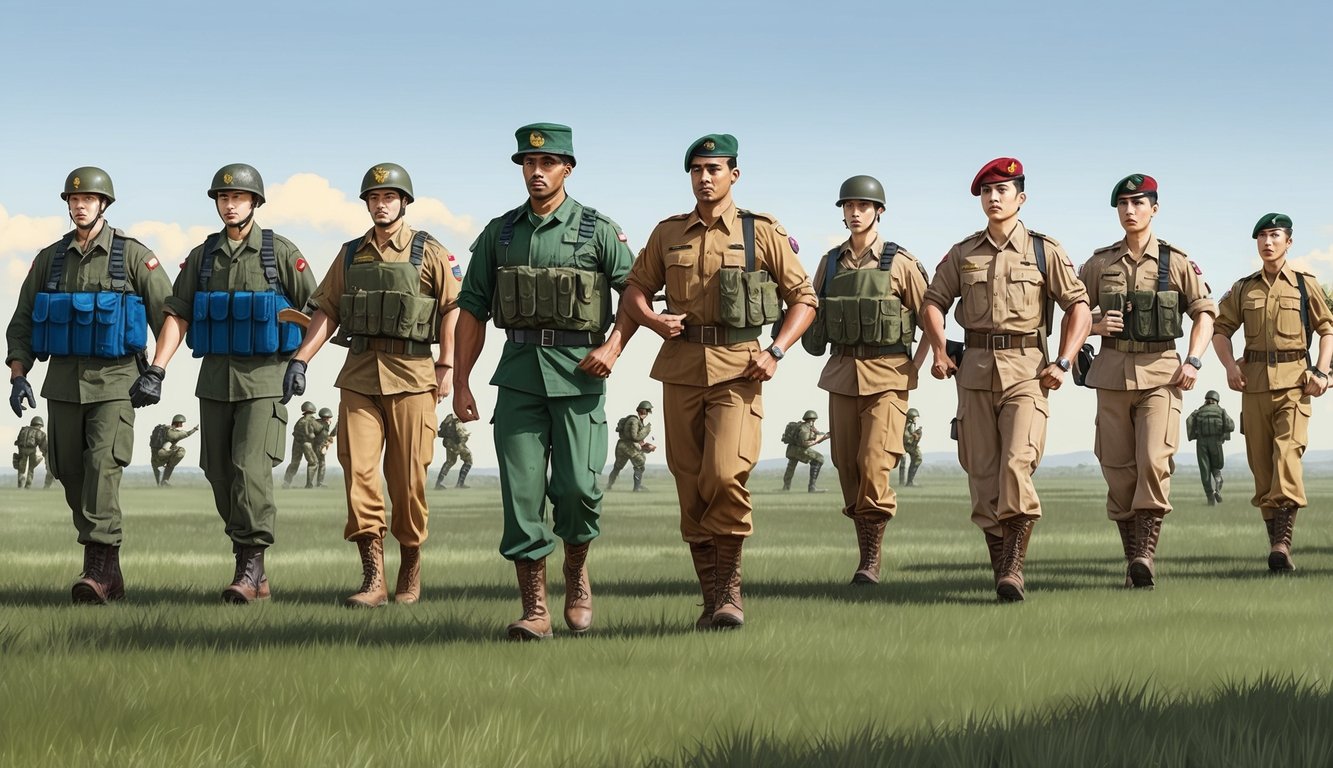
The duration and content of Army Advanced Individual Training (AIT) depend on the selected Military Occupational Specialty (MOS), providing the necessary skills for your specific Army role.
Infantryman and M1 Armor Crewman
If you’re training to be an infantryman (11B), you’ll undergo 14 weeks of One Station Unit Training (OSUT) at Fort Benning, GA, integrating Basic Combat Training and AIT into one continuous program.
M1 Armor Crewmen (19K) will have about 15 weeks of AIT at Fort Benning, learning to operate and maintain the M1 Abrams tank.
Both combat roles necessitate intensive physical training and the development of tactical skills, including weapons handling, squad tactics, and battlefield communications.
Medical and Aviation Specialists
Medical personnel have varying AIT lengths.
Combat medics (68W) train for about 16 weeks at Fort Sam Houston, TX, covering emergency medical practices and battlefield care.
Aviation roles like helicopter repairer (15T) typically involve longer AIT periods, often exceeding 20 weeks, conducted at Fort Eustis, VA, emphasizing complex maintenance procedures.
These specialties are centered on technical skills, allowing for extensive classroom-based and hands-on training with the actual equipment used in your future assignments.
Intelligence Analysts and Cyber Security
Intelligence Analysts (35F) complete a 16-week AIT at Fort Huachuca, AZ, focusing on gathering and analyzing information from various sources.
Cyber Operations Specialists (17C) participate in one of the most extensive AITs lasting 44 weeks, addressing advanced topics in computer systems and network security.
These technology-driven roles demand strong analytical capabilities and provide hands-on experience with state-of-the-art systems, preparing you to safeguard Army networks against threats.
Importance of AIT for Military Careers
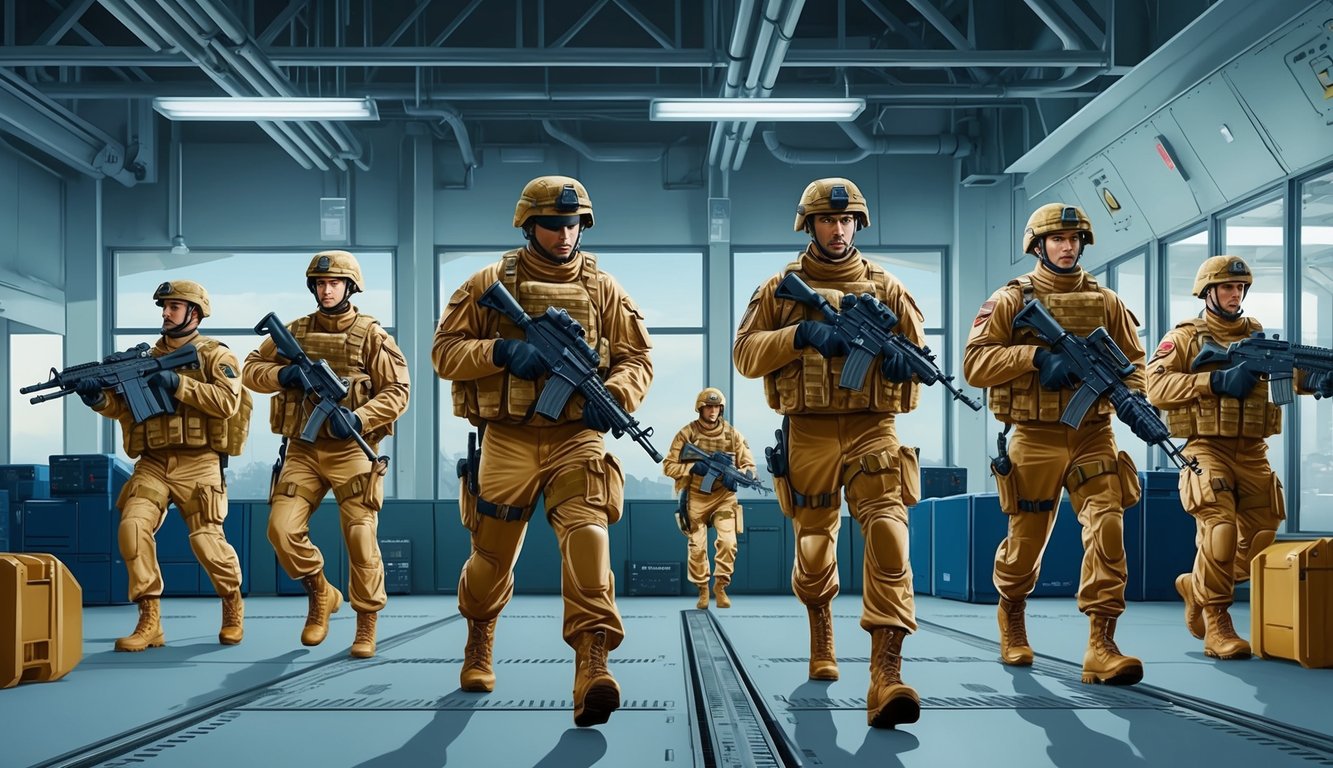
Advanced Individual Training plays a significant role in shaping your military career and future opportunities.
It endows you with the vital skills and knowledge tailored to your selected Military Occupational Specialty.
Role in Career Trajectory
AIT serves as the foundation for your entire military career.
You’ll develop specialized competencies relevant to your field, whether in infantry, logistics, or business administration, laying a groundwork for the real-life challenges you’ll encounter.
During AIT, you’ll benefit from the expertise of seasoned instructors who share invaluable insights and practical guidance aimed at ensuring your success in your role.
The skills developed during this training extend beyond your initial assignment, acting as building blocks that unlock diverse opportunities as your career advances.
Impact on Promotions and Advancements
Your performance during AIT can significantly affect your prospects for promotions and advancements within the service.
Excelling in training highlights your dedication and potential to superiors.
Many leadership roles require specific skills taught in AIT.
Mastering these skills early can provide an advantage when competing for promotions.
Some specialties also offer further advanced training opportunities, which can enrich your expertise and enhance your candidacy for upper ranks.
It’s essential to acknowledge that the military places a high value on continuous learning.
The habits and knowledge gained during AIT will aid in adapting to new challenges and technologies throughout your career.
Frequently Asked Questions
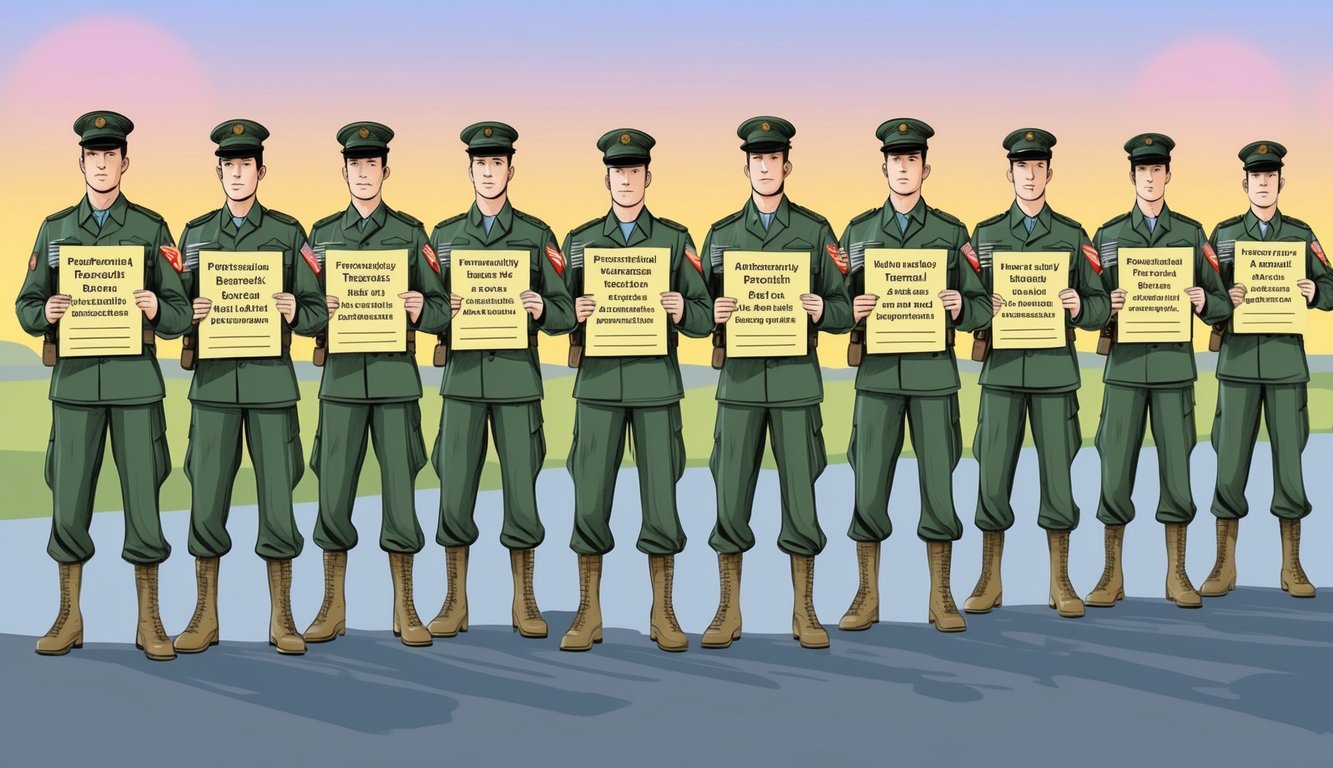
Army AIT encompasses distinct phases, locations, and durations depending on your chosen MOS.
Here are answers to common inquiries regarding this vital training phase.
What are the different phases of Army AIT?
AIT generally consists of two primary phases: classroom education and hands-on training.
You will first absorb theoretical knowledge associated with your MOS, followed by the application of those skills in practical exercises and simulations.
What follows after completing AIT for Army personnel?
Post-AIT, you’ll receive your initial duty assignment, which may be at a base within the U.S. or abroad.
You might also participate in additional specialized training courses based on your MOS and unit needs.
Which Army MOS has the shortest Advanced Individual Training?
The shortest AIT is for MOS 92G (Culinary Specialist), lasting approximately 8 weeks.
Other short AITs include 92Y (Unit Supply Specialist) and 56M (Chaplain Assistant), both taking around 10 weeks.
Can you list the 17 locations where Army AIT is conducted?
Army AIT takes place at numerous installations, including:
- Fort Lee, Virginia
- Fort Sam Houston, Texas
- Fort Gordon, Georgia
- Fort Huachuca, Arizona
- Fort Sill, Oklahoma
This is just a sampling; the specific location will be determined by your MOS.
What is the duration of AIT for Army Reserve soldiers?
AIT length for Army Reserve soldiers typically aligns with that of active duty soldiers, varying from 8 weeks to over a year, and you will train alongside active duty individuals.
How extensive is the AIT for members of the Army National Guard?
Members of the Army National Guard undergo the same AIT as their active-duty and Reserve counterparts, ensuring consistent training in terms of duration and content across all components for their chosen MOS.

